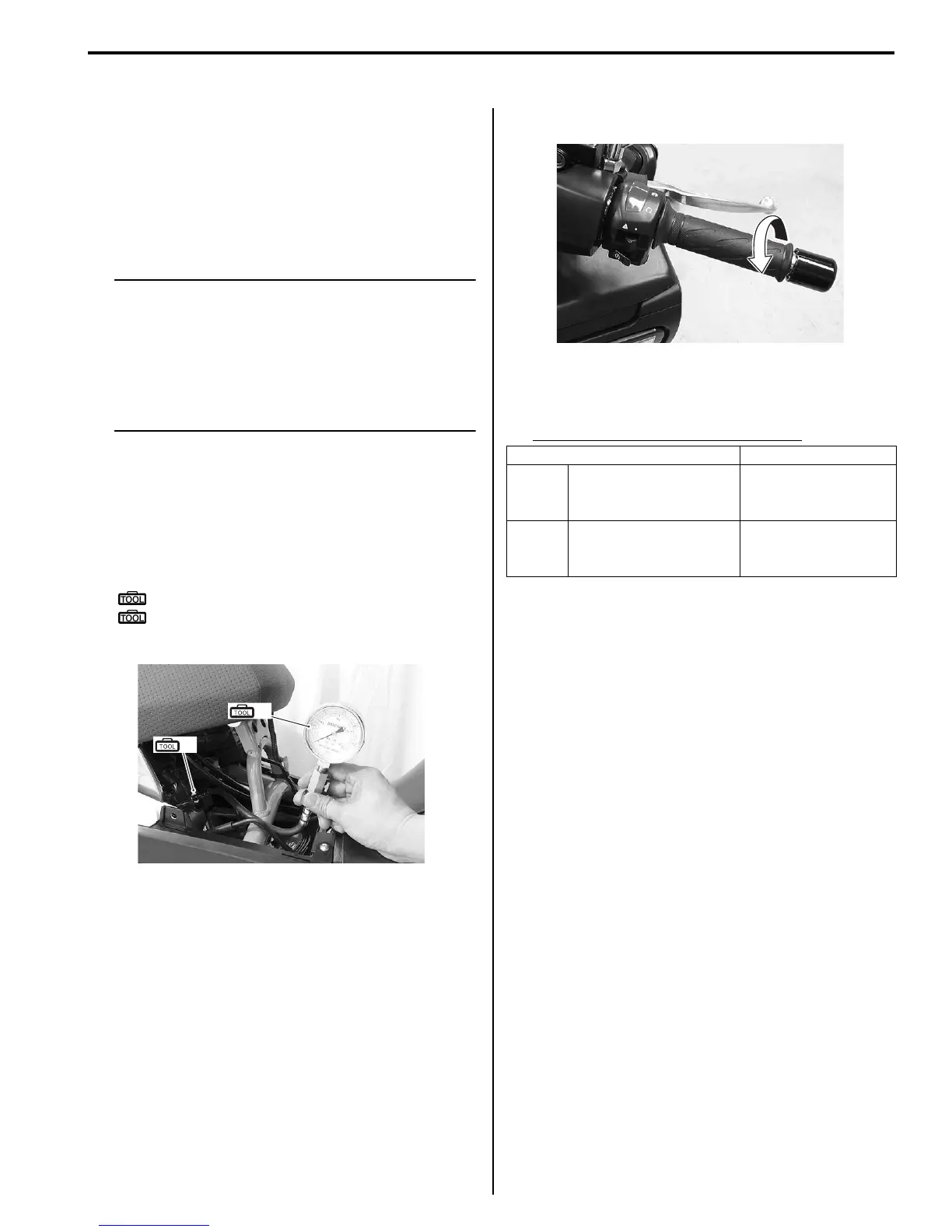Engine Mechanical: 1D-3
Diagnostic Information and Procedures
Compression Pressure Check
B705H11404002
The compression pressure reading of the cylinder is a
good indicator of its internal condition.
The decision to overhaul the cylinder is often based on
the results of a compression test. Periodic maintenance
records kept at your dealership should include
compression readings for each maintenance service.
NOTE
• Before checking the engine for
compression pressure, make sure that the
cylinder head bolts are tightened to the
specified torque and the valves are
properly adjusted.
• Make sure that the battery is in fully-
charged condition.
1) Warm up the engine.
2) Remove the spark plug. Refer to “Spark Plug
Removal and Installation in Section 0B (Page0B-3)”.
3) Install the compression gauge and adaptor in the
spark plug hole. Make sure that the connection is
tight.
Special tool
(A): 09915–64512 (Compression gauge)
(B): 09913–10750 (Compression gauge
adapter)
4) Keep the throttle grip in the fully-opened position.
5) Press the starter button and crank the engine for a
few seconds. Record the maximum gauge reading
as the cylinder compression.
Compression pressure specification
Low compression pressure can indicate any of
the following conditions:
• Excessively worn cylinder wall
• Worn piston or piston rings
• Piston rings stuck in grooves
• Poor valve seating
• Ruptured or otherwise defective cylinder head
gasket
6) After checking the compression pressure, reinstall
the removed parts.
(A)
(B)
I705H1140176-01
Standard Limit
E-02,
19, 24,
54
1 060 – 1 140 kPa
(10.6 – 11.4 kgf/cm
2
,
150 – 162 psi)
660 kPa
(6.6 kgf/cm
2
, 94 psi)
E-03,
28, 33
1 000 – 1 080 kPa
(10.0 – 10.8 kgf/cm
2
,
142 – 154 psi)
620 kPa
(6.2 kgf/cm
2
, 88 psi)
I705H1140177-01

